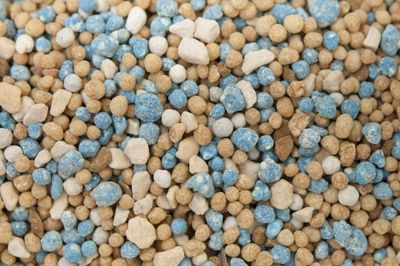What is Slow-Release Fertilizer?
In a nutshell, slow-release fertilizers are fertilizers that release a small, steady amount of nutrients over a course of time. These can be natural, organic fertilizers that add nutrients to the soil by naturally breaking down and decomposing. Most often, though, when a product is called slow-release fertilizer, it is fertilizer coated with plastic resin or sulfur-based polymers which slowly break down from water, heat, sunlight, and/or soil microbes. Quick releasing fertilizers can be over applied or improperly diluted, which can result in the burning of plants. They can also be quickly leached out of the soil by regular rain or watering. Using slow-release fertilizers eliminates the risk of fertilizer burn, while also staying in the soil longer. Per pound, the cost of slow-release fertilizers is generally a little more expensive, but the frequency of application with slow-release fertilizers is much less, so the cost of both types of fertilizers throughout the year is very comparable.
Using Slow-Release Fertilizers
Slow-release fertilizers are available and used on all types of plants– turf grasses, annuals, perennials, shrubs, and trees. All the large fertilizer companies, such as Scotts, Schultz, Miracle-Gro, Osmocote, and Vigoro have their own lines of slow-release fertilizer. These slow-release fertilizers have the same type of NPK ratings as immediate releasing fertilizers, for example 10-10-10 or 4-2-2. Which type of slow-release fertilizer you choose can be based on which brand you personally prefer but should also be selected for what plants the fertilizer is intended for. Slow-release fertilizers for turf grasses, for instance, generally have a higher nitrogen ratio, such as 18-6-12. These turf grass slow-release fertilizers are often combined with herbicides for common lawn weeds, so it is important to not use a product like this in flowerbeds or on trees or shrubs. Slow-release fertilizers for flowering or fruiting plants may have higher ratios of phosphorus. A good slow-release fertilizer for vegetable gardens should also contain calcium and magnesium. Always read product labels carefully.
